NCHS: A Blog of the National Center for Health Statistics
Q & A from Author of Emergency Department Visits Related to Mental Health Disorders Among Adults, by Race and Hispanic Ethnicity
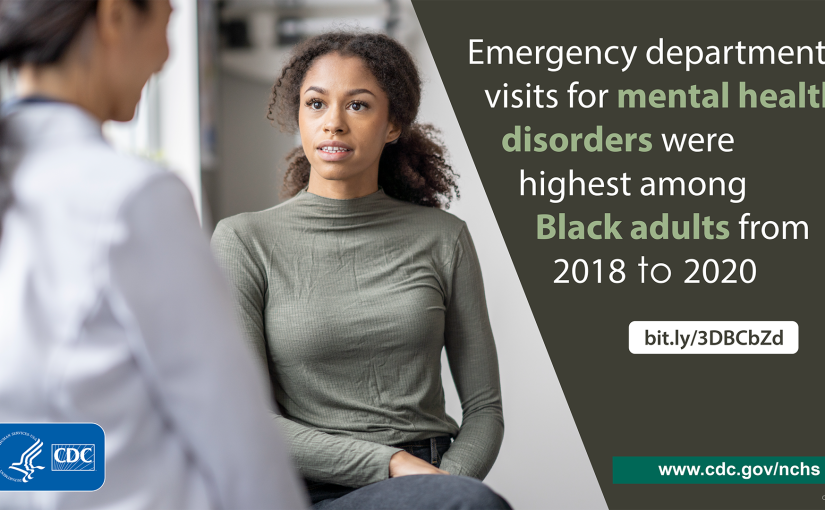
Q: Why did you decide to report on rates of emergency department (ED) visits for mental health disorders by race and ethnicity? ZP: As mentioned in the introduction of this report, prior research has shown that certain race/ethnicity groups are less likely to receive routine mental health care. Additionally, mental health disorders are frequently diagnosed at ED visits, Read More >
Posted on byQuickStats: Percentage of Adults Aged ≥18 Years with Serious Psychological Distress in the Past 30 Days, by Sex and Age Group — National Health Interview Survey, United States, 2021
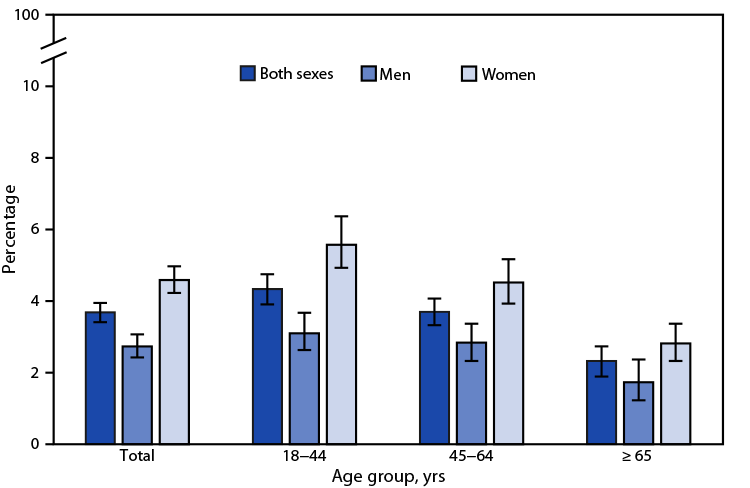
In 2021, 3.7% of adults aged ≥18 years had serious psychological distress in the past 30 days with percentages higher among women (4.6%) than among men (2.7%). The higher percentages among women were seen across all age groups: 5.6% versus 3.1% in adults aged 18–44 years, 4.5% versus 2.8% in those aged 45–64 years, and Read More >
Posted on byQuickStats: Percentage of Women Aged 50–74 Years Who Had a Mammogram Within the Preceding 2 Years by Family Income — National Health Interview Survey, United States, 2021
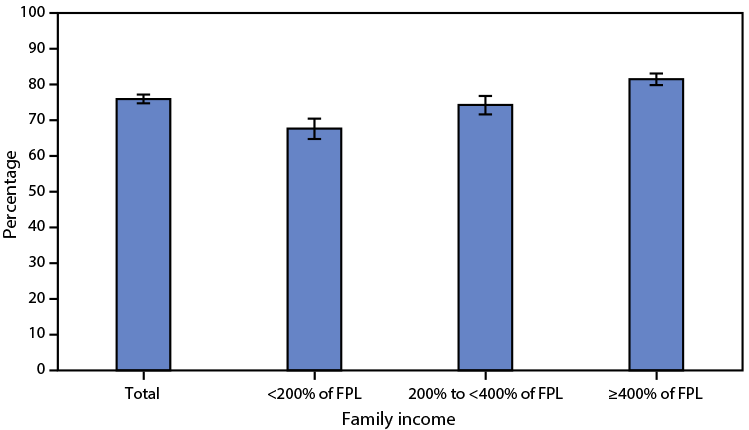
In 2021, 76.0% of women aged 50–74 years reported that they had a mammogram within the preceding 2 years. The percentage of women who had a mammogram within the preceding 2 years increased with family income, from 67.7% of women with family income <200% of federal poverty level (FPL), to 74.3% of women with income Read More >
Posted on byLove is in the Air: Marriages Rebound in 2021

The number of marriages in 2020 was the lowest recorded in the United States since 19631, as many couples had to delay weddings due to the pandemic. However, in 20212 there was a rebound as both the number and rate of marriages were up 18% compared with 2020. The increase in the number and rate of Read More >
Posted on byQuickStats: Percentage of Adults Aged ≥45 Years Who Use a Hearing Aid, by Sex and Age Group — National Health Interview Survey, United States, 2021
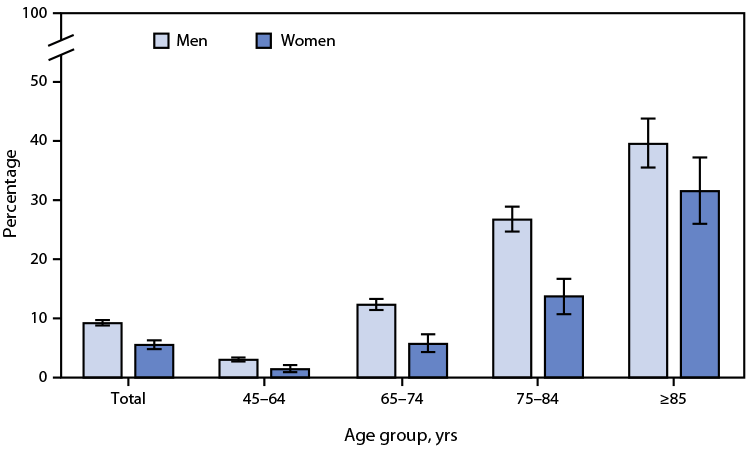
In 2021, among adults aged ≥45 years, men were more likely to use a hearing aid than were women (9.2% versus 5.5%). This pattern was found in all age groups: 3.0% of men versus 1.4% of women among those aged 45–64 years, 12.3% versus 5.7% among those aged 65–74 years, 26.7% versus 13.7% among those Read More >
Posted on byNew Detailed Race and Ethnicity Data Query System
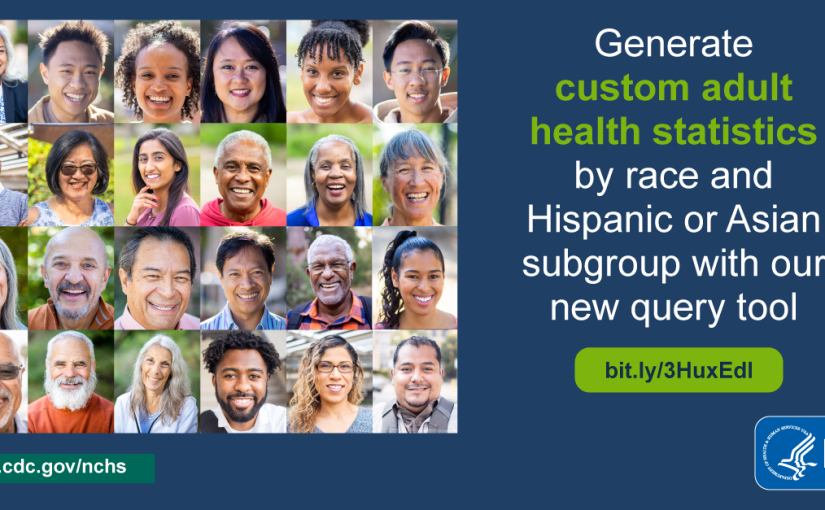
NCHS has released a new interactive data query system that allows users to search for data on adults about selected health topics by detailed race and ethnicity groups and subgroups in the United States. The new system provides estimates as three-year averages based on 2019-2021 final data from the National Health Interview Survey (NHIS). The three-year averages Read More >
Posted on byQuickStats: Percentage of Persons Who Used Telemedicine During the Past 12 Months, by Age Group — National Health Interview Survey, United States, 2021
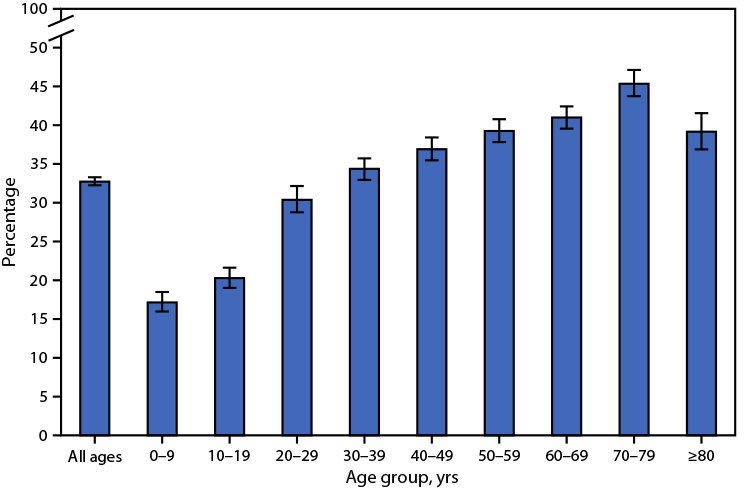
In 2021, approximately one third (32.8%) of persons of all ages had a telemedicine appointment with a doctor, nurse, or other health professional during the past 12 months. The percentage with a telemedicine appointment increased with age, from 17.2% among children aged <10 years to 45.5% among adults aged 70–79 years, and then decreased to Read More >
Posted on byQuickStats: Age-Adjusted Percentage of Adults Aged 18 Years or Older With Arthritis, by Sex and Race and Hispanic Origin — National Health Interview Survey, United States, 2021
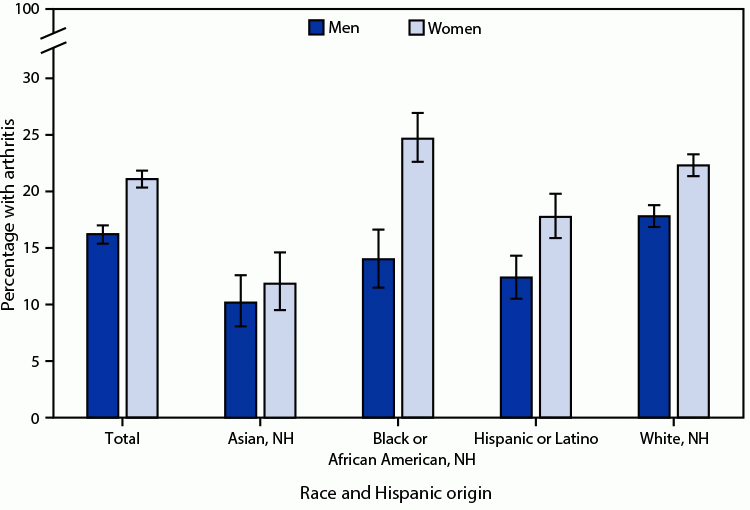
In 2021, among adults aged 18 years or older, women were more likely to have arthritis than men (21.0% versus 16.2%). This pattern was consistent among non-Hispanic White (White) (22.2% versus 17.7%), non-Hispanic Black or African American (Black) (24.6% versus 13.9%), and Hispanic or Latino (17.7% versus 12.4%) adults. Among non-Hispanic Asian (Asian) adults, the Read More >
Posted on byMore Than a Quarter of U.S. Adults and Children Have at Least One Allergy
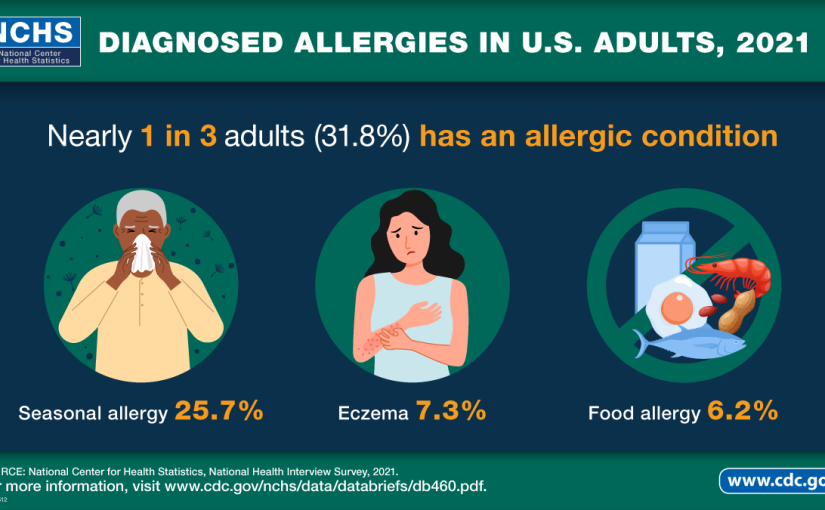
Nearly 1 in 3 U.S. adults and more than 1 in 4 U.S. children reported having a seasonal allergy, eczema, or food allergy in 2021, according to new data from CDC’s National Center for Health Statistics. Almost 6% of U.S. adults and children have a food allergy, with Black, Non-Hispanic adults, and children being Read More >
Posted on byQuickStats: Birth Rates for Females Aged 15–19 Years, by Age Group — National Vital Statistics System, United States, 1991–2021
The birth rate for females aged 15–19 years declined from a 1991 peak of 61.8 per 1,000 females to a record low of 13.9 in 2021. From 1991 to 2021, the rate for females aged 15–17 years declined from 38.6 to 5.6 and from 94.0 to 26.6 for those aged 18–19 years. Most of the Read More >
Posted on byLatest Report on the Nation’s Health Focuses on Pre-pandemic Health Disparities
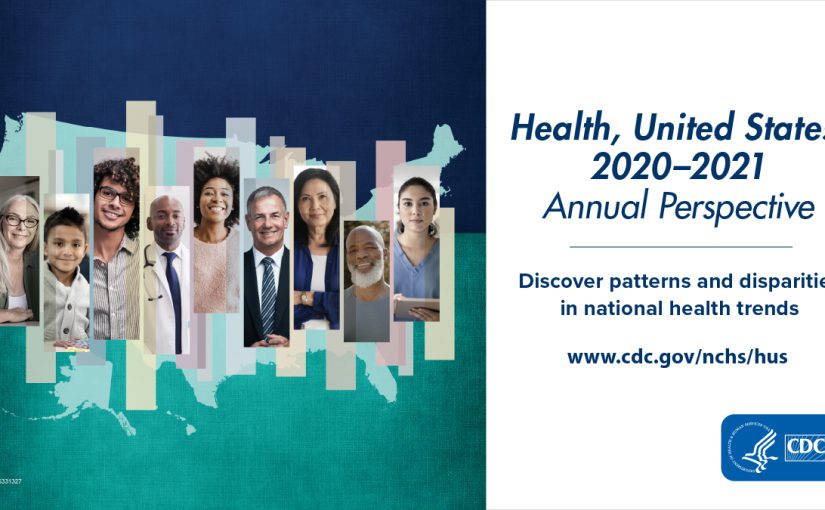
The first Health, United States: Annual Perspective, released on January 19, tracks trends in health disparities across the nation. This shorter, health equity-focused report is part of a new direction for the 47-year-old Health, United States program. Together with the new Health, United States website, launched in August 2022, the Annual Perspective reflects a continued Read More >
Posted on byQuickStats: Percentage of Adults Aged 18 Years or Older Who Have Ever Had Hepatitis, by Age Group and Sex — National Health Interview Survey, United States, 2021
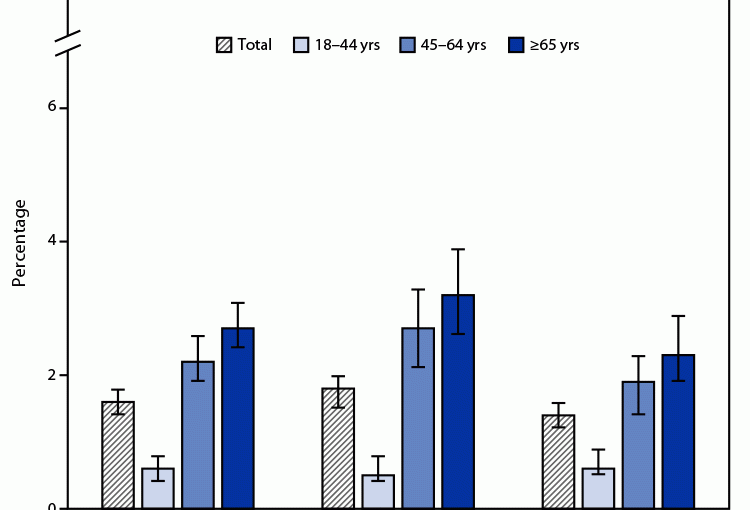
In 2021, 1.6% of adults aged 18 years or older reported having ever had hepatitis. The prevalence of hepatitis was lowest among adults aged 18–44 years (0.6%) and highest among adults aged ≥65 years (2.7%). Prevalence increased with age for both men and women. The percentage of adults who ever had hepatitis was higher in Read More >
Posted on byQuickStats: Percentage of Mothers with Gestational Diabetes, by Maternal Age — National Vital Statistics System, United States, 2016 and 2021
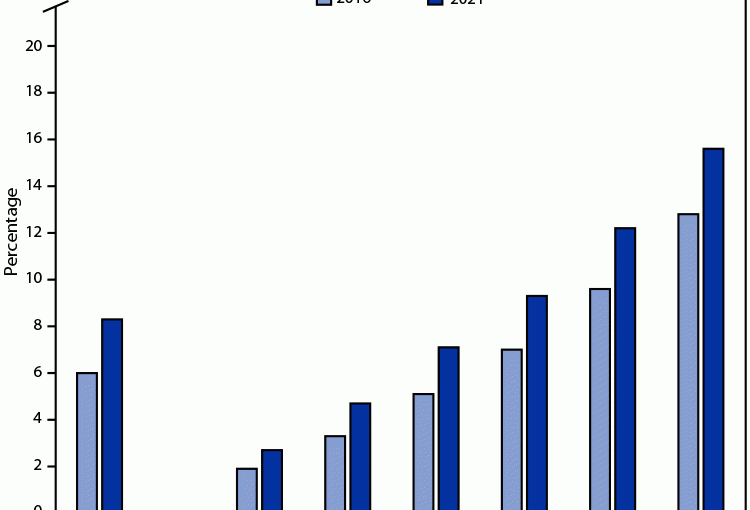
The percentage of mothers giving birth who received a diagnosis of diabetes during pregnancy (gestational diabetes) increased from 6.0% in 2016 to 8.3% in 2021. Increases in gestational diabetes were seen in each maternal age group, and rates rose steadily with maternal age; in 2021, the rate for mothers aged ≥40 years (15.6%) was nearly Read More >
Posted on byPODCAST: Data Modernization Initiative & NCHS Updates
https://www.cdc.gov/nchs/pressroom/podcasts/2022/202221222/20221222.htm HOST: The CDC Data Modernization Initiative, or DMI, is a multi-year, multi-billion-dollar effort to modernize data across the federal and state public health landscape. The ultimate goal of DMI is to get better, faster, actionable insights for decision-making at all levels of public health. NCHS is fully engaged in this initiative. One major activity Read More >
Posted on byNew Report Confirms U.S. Life Expectancy has Declined to Lowest Level Since 1996

U.S. Life Expectancy decreased in 2021 for the second consecutive year, according to final mortality data released today. The drop was primarily due to increases in COVID-19 and drug overdose deaths. The data are featured in two new reports from CDC’s National Center for Health Statistics (NCHS). “Mortality in the United States: 2021” features the Read More >
Posted on byQuickStats: Birth Rates for Females Aged 15–19 Years, by State — National Vital Statistics System, United States, 2021
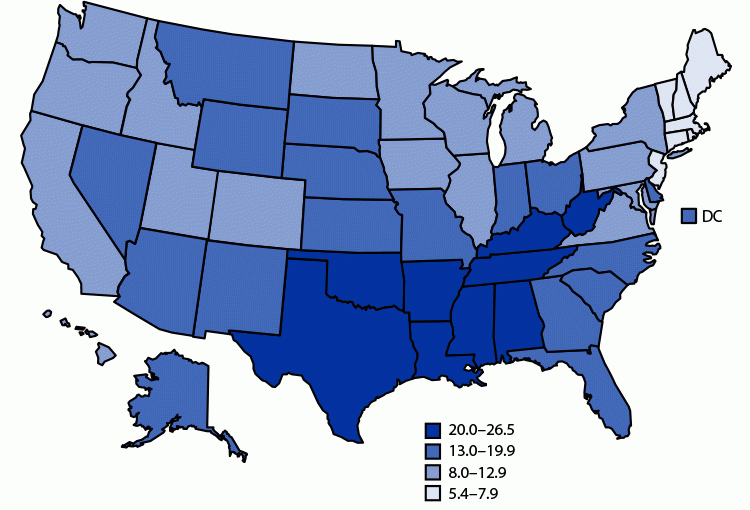
In 2021, the U.S. birth rate for females aged 15–19 years was 13.9 births per 1,000 persons, with rates generally lower in the Northeast and higher across the southern states. Birth rates among females aged 15–19 years ranged from 5.4 in New Hampshire, 5.7 in Massachusetts, and 6.4 in Vermont to 26.5 in Arkansas and Read More >
Posted on byCDC Extends Tool to Monitor Severe Obesity Among Children and Adolescents
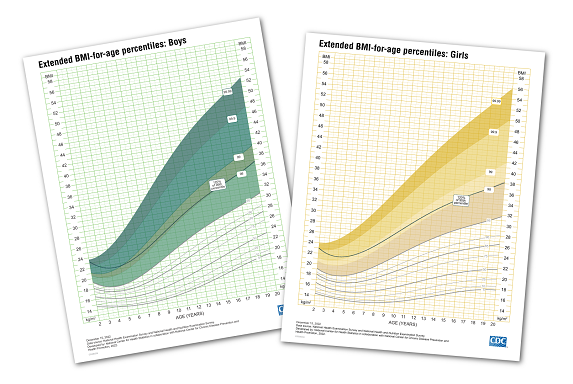
CDC has added to its BMI-for-age growth charts to enable consistent, meaningful tracking of growth in the nearly one in five U.S. children and adolescents who have obesity. The percentage of children and adolescents with severe obesity has nearly quadrupled over the last five decades, from 1% in the early 1970s to 6.1% in 2017-18. Read More >
Posted on byMore Than 3,500 Americans Have Died from Long COVID-Related Illness in the First 30 Months of the Pandemic
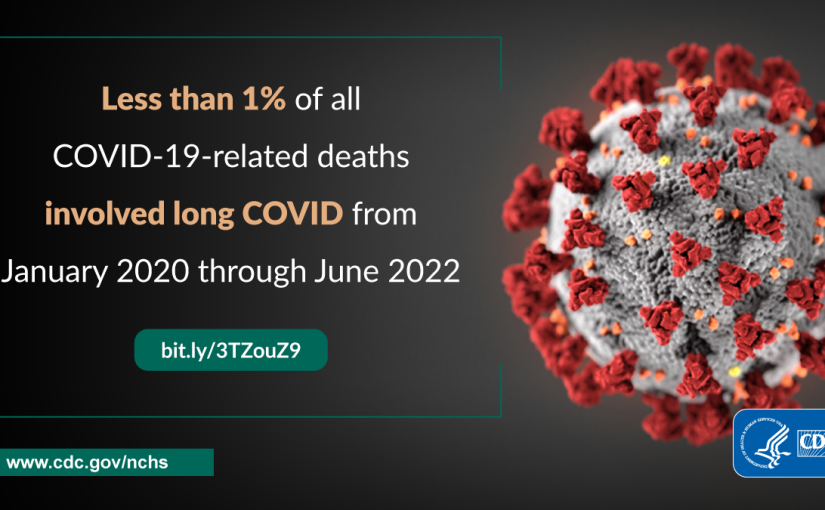
Death certificate analysis shows that long COVID played a part in 3,544 deaths in the United States from January 2020 through the end of June 2022. Long COVID deaths represented less than 1% of the 1,021,487 deaths for which COVID-19 was the underlying or contributing cause of death in that period. These findings are included Read More >
Posted on byQuickStats: Percentage of Office-Based Physicians Using Telemedicine Technology, by Specialty — United States, 2019 and 2021
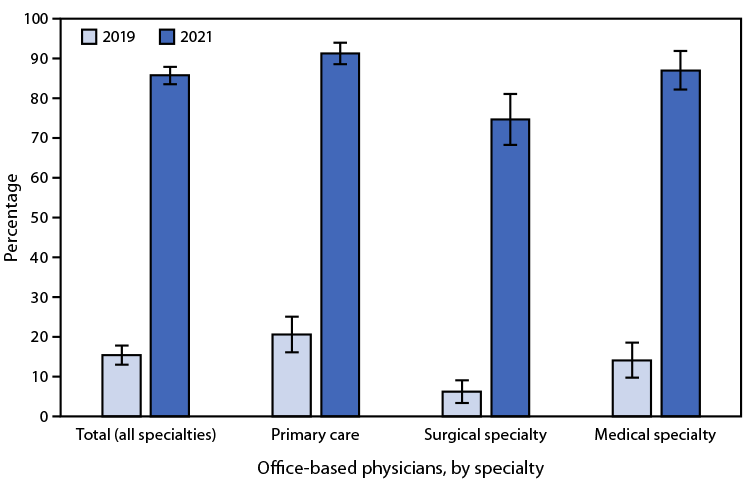
From 2019 to 2021, the use of telemedicine technology increased for office-based physicians from 15.4% to 85.9%. In both 2019 and 2021, the use of telemedicine technology was higher among primary care physicians and medical specialty physicians than it was among surgical specialty physicians. In 2021, 91.4% of primary care physicians, 87.2% of medical specialty Read More >
Posted on byTwin Births Declined 7% During First Year of the Pandemic
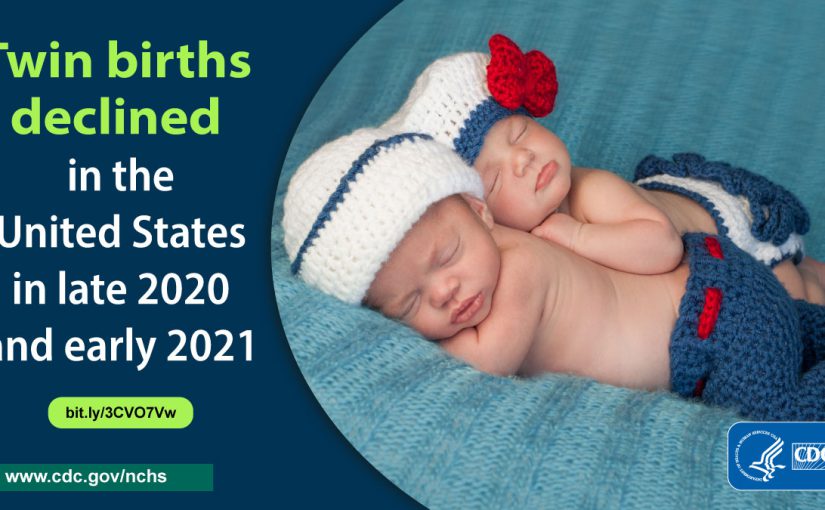
Following an average annual decline of 2% from 2014 to 2019, the number of twin births fell by 7% from 2019 to 2020 and increased by 2% from 2020 to 2021. The data is featured in a new report released today by CDC’s National Center for Health Statistics (NCHS). The report “Changes in Twin Births Read More >
Posted on byQuickStats: Percentage of Adults Aged ≥18 Years Living in Families That Were Food-Insecure in the Past 30 Days by Family Income and Urbanicity — National Health Interview Survey, United States, 2021
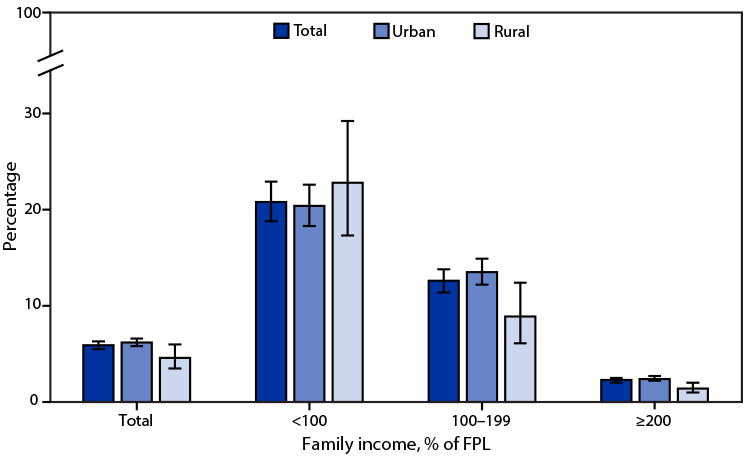
In 2021, 5.9% of adults aged ≥18 years lived in families that were food-insecure in the past 30 days. The percentage was higher in urban areas (6.2%) compared with rural areas (4.6%) overall and within households earning 100%–199% of FPL (13.5% versus 8.9%) and ≥200% of FPL (2.4% versus 1.4%). For adults living in families Read More >
Posted on byPODCAST – HEALTHY PEOPLE 2020: PROGRESS TOWARDS ELIMINATING RACIAL & ETHNIC HEALTH DISPARITIES
https://www.cdc.gov/nchs/pressroom/podcasts/2022/20221130/20221130.htm HOST: The Healthy People initiative was launched by the U.S. Department of Health and Human Services over 40 years ago. Healthy People provides science-based, 10-year targets for public health objectives for the U.S. population. As in the preceding two decades, Healthy People 2020, or HP2020, included an overarching goal related to health disparities. On Read More >
Posted on byDrug & Alcohol Deaths on the Rise Among Older Americans
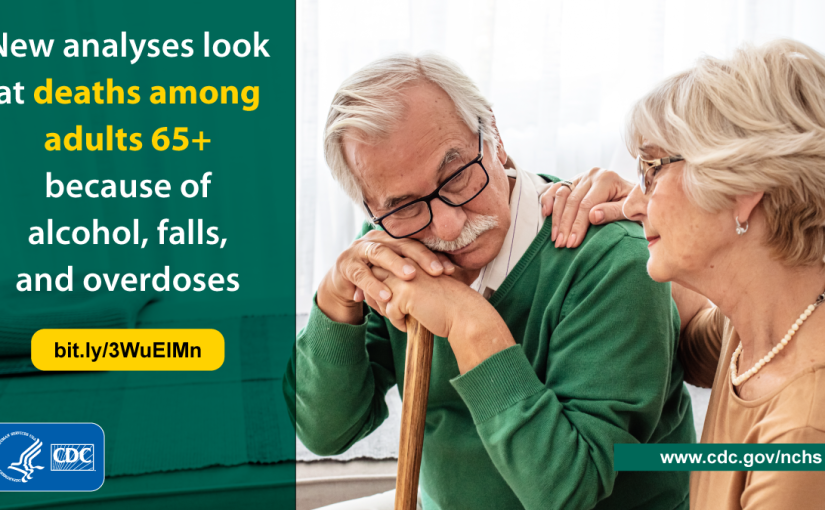
Drug and alcohol abuse have impacted seniors in the United States as it has among younger Americans. Over 5,000 people ages 65 and over in the U.S. died of a drug overdose in 2020, and more than twice that many (11,616) died of alcohol-induced causes. The data are featured in two new reports released today Read More >
Posted on byQ & A from Author of Awareness of the MyPlate Plan: United States, 2017–March 2020
Questions for Edwina Wambogo, Health Statistician and Lead Author of “Awareness of the MyPlate Plan: United States, 2017–March 2020.” Q: Can you describe what the MyPlate plan is? EW: The United States Department of Agriculture developed MyPlate in 2011 as the primary education tool to communicate recommendations from the Dietary Guidelines for Americans. MyPlate is Read More >
Posted on byQuickStats: Drug Overdose Death Rates Among Persons Aged ≥15 Years, by Age Group and Urban-Rural Status — National Vital Statistics System, United States, 2020
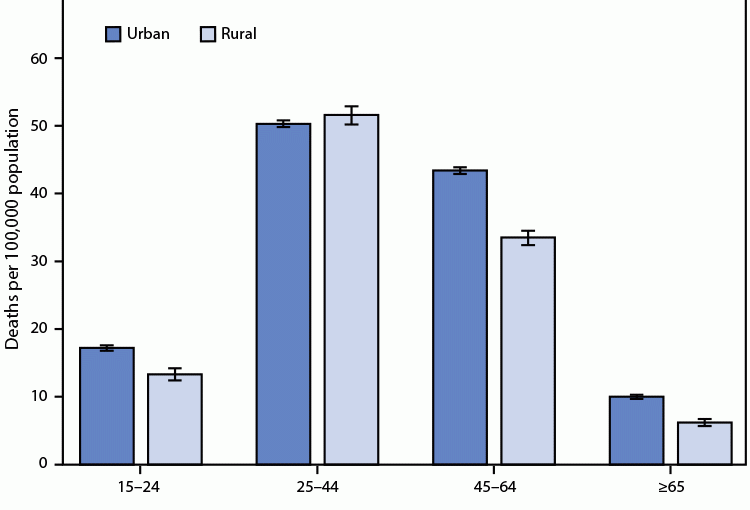
During 2020, death rates for drug overdose causes were higher in urban areas than in rural areas for those aged 15–24 years (17.2 compared with 13.3), 45–64 years (43.4 compared with 33.5), and ≥65 years (10.0 compared with 6.2). Among adults aged 25–44, drug overdose death rates were not significantly different between urban and rural Read More >
Posted on by
